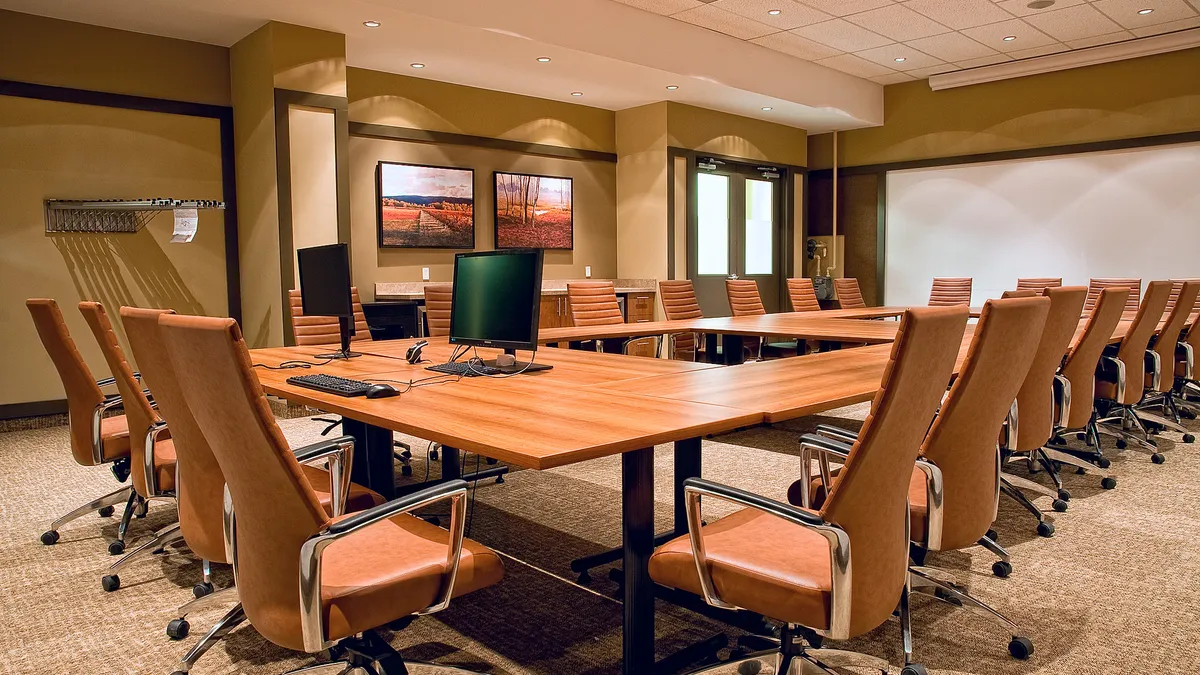Editor's note: The following is a guest article from Matt Harris, head of workplace technology at Envoy.
As corporations digitally transform and modern business models redefine the internal structure of organizations, there is change afoot in IT departments. Roles and responsibilities shift as technology extends into every facet and function within organizations, and companies strive to keep up with rapidly evolving tech.
What does this mean for CIOs and heads of IT?
The role is more dynamic and cross-functional than ever. In fact, a survey done last year by Forbes Insights found that 40% of CIOs say their function will be essential to successfully formulating customer-facing solutions, creating global capabilities, developing new revenue-earning opportunities and fostering innovation within their companies.
The role of the IT department used to be viewed as a backroom function within an organization, less concerned with business solutions and more with the health of company computers and internal systems.
Today, the IT department is integral in overall business strategy, as well as how employees leverage data, internal systems and solutions in order to drive growth.
Creating an efficient workplace with improved technology for employee benefit also enhances culture, particularly as more workers are remote.
As departments like IT take new forms, a new process and workflow ensues, as do changes in department functions and relationships with one another. IT and finance no longer have the same relationship they did 10 years ago.
Instead, IT is now collaborating with other departments to make sure all areas of the company are aligned on the latest and greatest technology.
IT is also developing new relationships and collaborating with HR departments to strategically re-approach one of the most important areas of the business: the employees.
A case for the CPO over CFO
HR has taken a similar path to IT; new technologies mean the department is no longer bogged down by paperwork. Automation has taken over a lot of the daily mundane work, increasing productivity and opening opportunities for HR to play a more strategic and analytical role in organizations' success and culture.
According to LinkedIn's annual 2019 Global Talent Trends report, one of the most important trends transforming the workplace is flexibility, which provides a perfect example of ways that IT and HR leaders can work together to improve employee engagement.
For example, consider how one of the biggest flexible trends is the growth of remote workers. Workplace leaders must refine policies and tools to support remote employees so that they feel like part of the team.
The key to seamless culture and collaboration when you have so many people in many different locations is the ability to communicate easily and effortlessly. In partnership with HR, IT can develop more effective systems and best practices to keep employees connected and engaged.
Complex processes, like employee onboarding and offboarding, benefit especially from a tightly coupled partnership between HR and IT. Rather than looking at the IT components of these processes as boxes to be checked, both teams develop a shared vision of the overall employee experience.
And when it's time to roll out new processes, the IT team isn't merely reactive to requests to integrate with the HRIS; they are actively and thoughtfully identifying process improvements and automations along the way that make all parts of the process feel seamless.
HR starts to think more like IT, too, for example by better understanding how changes to an organization structure impacts automated system provisioning on the IT side. With the employee experience as the shared focus, both teams work better and smarter.
With the resources and support of the HR department, IT has a real opportunity to collaborate and create solutions for the workforce that will allow a much more connected, collaborative, and responsive workplace. These solutions will encourage employee growth and development, and more effective communication.
Future of the IT department
Though it is rare to see the IT department under HR, it isn't unique anymore. There is a trend in the making, and it'll only pick up speed as technology evolves at a quicker rate.
As industry is already seeing and will continue to see, IT departments will drive seamless employee experiences every step of the way.
This includes running the employee onboarding process, where new employees will be connected to the best technology with no complications or confusion when getting up and running, to optimizing meetings rooms for remote employees and running all-hands meetings so critical communication moments are impactful for every employee.
IT will help to eliminate barriers between remote employees and HQ. They'll even help HR build an experience for potential employees. IT will be able to create an unbeatable candidate experience and drive increased hiring.
IT's relationship with HR and its people has the opportunity to completely transform the way business is done and the way employees exist in (and out of) the workplace. Industry will start to see more IT teams report to HR and chief people officers, and even directly to the CEO.
The shifting role doesn't mean it will cut ties with the finance department; it just means the IT team has an opportunity to be leveraged for all its worth in order to drive a strong competitive edge.
The future of IT is bright within the modern business model and presents an opportunity for greater success within any organization.




















